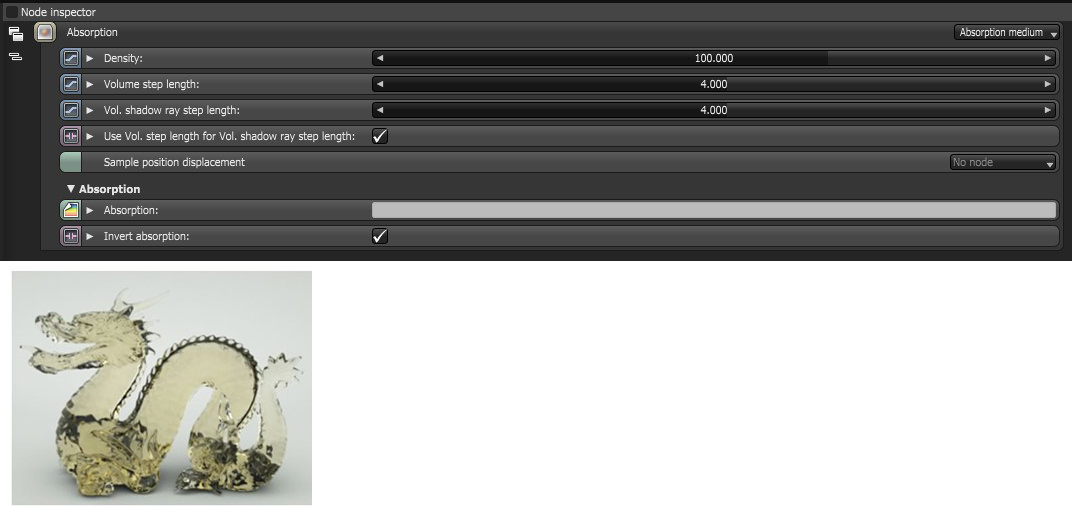
AbsorptionDefines how fast light is absorbed while passing through a medium. is controlled with the absorption color, which defines how quickly light is absorbed while passing through a medium. A setting of 0.0 or black means no absorption. The higher the value the faster light is absorbed by the medium. Additionally, the color specified in the Absorption parameter will produce its complementary color in the rendering (Figure 1).

Figure 1: Specifying a blue hue in the Absorption parameter will absorb blue more quickly thus giving the object an orange appearance.
Absorption Medium Parameters
Density - The absorption texture is multiplied by the Density parameter. This allows setting a wide range of values more easily.
Volume Step Length - parameter may need to be adjusted depending on the surface. The default value for the step length is 4m. Should the volume be smaller than this, you will likely need to decrease the step length. Please note that decreasing this will reduce the render speed. Increasing this value will cause the ray marching algorithm to take longer steps. Should the step length far exceed the volume’s dimensions, then the ray marching algorithm will take a single step through the whole volume. Most accurate results are obtained when the step length is as small as possible. Figure 4 shows a scattering node connected to the medium input of a Specular materialUsed for transparent materials such as glass and water..
Volume Shadow Ray Step Length - Step length that is used by the shadow ray for marching through volumes.
Use Volume Step Length for Volume Shadow Ray Step Length - Uses Volume Step Length as the Volume Shadow Ray Step Length as well.
Sample Position DisplacementThe process of utilizing a 2D texture map to generate 3D surface relief. As opposed to bump and normal mapping, Displacement mapping does not only provide the illusion of depth but it effectively displaces the actual geometric position of points over the textured surface. - Allows a texture to control a volume's sample positions displacement.
Absorption - Defines how much light is absorbed over the color range. By enabling Invert Absorption this parameter behaves like transparency.
Invert Absorption - Inverts the absorption color so that the absorption channel becomes a transparency channel. This helps visualize the effect of the specified color since a neutral background shining through the medium will appear approximately in that color.